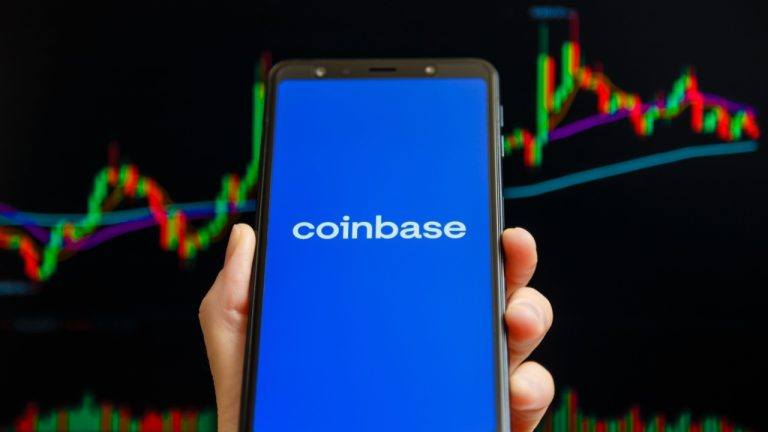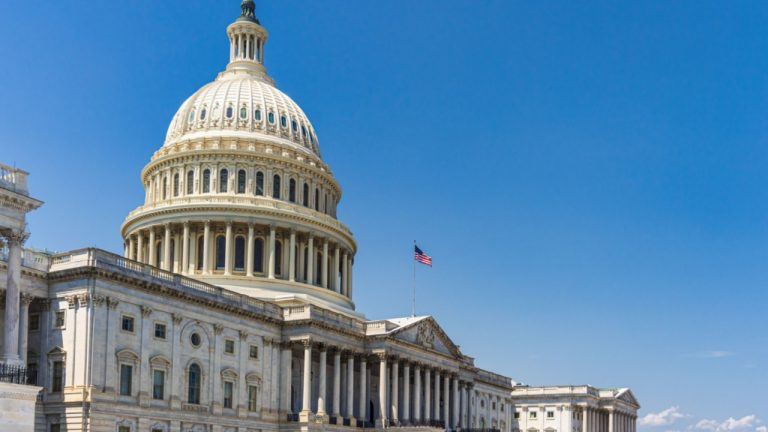
Are CBDCs kryptonite for crypto?

Central bank digital currencies digital currencies backed by a central bank have received renewed interest with the United States President Joe Bidens Executive Order on Ensuring Responsible Development of Digital Assets. Proponents of CBDCs argue that widespread adoption will promote financial inclusion, expand public access to safe money, improve the efficiency of payments and more.
But their rationale remains tenuous. Many analysts and practitioners increasingly view CBDCs as fundamentally at odds with the purpose of cryptocurrency, which is to provide a secure, decentralized peer-to-peer mechanism for transferring funds. And the hypothetical benefits of CBDCs remain hypothetical no evidence exists yet that suggests any advantages over other examples of distributed ledger technologies in financial services, especially given the new risks they pose.
The status of CBDCs worldwide
Nine countries have already developed their own CBDCs, and the U.S. has joined a list of over 100 countries exploring issuing one. Most CBDCs take a hybrid approach whereby The central bank issues the CBDC to banks and other and other payment service providers, which in turn distribute the CBDC to users throughout the economy and provide them with account-related services, according to a recent report by the Hoover Institution.
There are other types, according to leading experts at the Bank for International Settlements which consists of stakeholders from major central banks. These include a synthetic CBDC, where the consumer has a claim on an intermediary, with the central bank only keeping track of wholesale accounts; and a direct CBDC, where the consumer has a claim on the central bank, with it handling all the retail.

Some scholars have underscored that DLT has a role to play in helping central banks become more efficient and secure, but such technology should be introduced with a minimally invasive CBDC design one that upgrades money to current needs without disrupting the proven two-tier architecture of the monetary system, according to Raphael Auer, head of the BIS Innovation Hub Eurosystem Centre, and Rainer Bhme, a professor at the University of Innsbruck.
The fact that central banks are interested in digital currencies is not surprising. As countries look to rebound from nearly two years of lockdowns and other restrictions on mobility, coupled with rising inflation, central banks have been feeling the pressure to promote employment and manage price levels u20 their dual mandate. Across the world, central banks have bought a significant amount of bonds, thereby expanding the money supply and arguably further contributing to inflation. For example, the Federal Reserve has expanded the U.S. money supply from roughly $4 trillion to over $20 trillion over the past two years, but we are only now seeing the resulting inflationary effects.
Evaluating the potential benefits
In a 2020 report, the BISoutlined a handful of potential benefits brought up by proponents of CBDCs: financial inclusion, cross-border payments, financial resilience and stability, increased efficiency of fiscal transfers, and privacy. But cryptocurrency fulfills all of these aims better than government-backed currencies.
Lets take a look at these potential benefits one by one.
Financial inclusion: The expansion of decentralized finance and emergence of nonfungible tokens are already changing the economic landscape. Thousands of content creators have sold NFTs and joined the DeFi community, removing intermediaries and allowing revenues to go directly to the creators.
Were entering a Web2.5 era where content creators have benefited from the rise of social media, but what they create is owned by centralized groups, Avery Akkineni, president of VaynerNFT, tells Magazine. Now they are starting to own the end-to-end process, and weve seen some of these creators become wildly successful. […] That is inspiring a new generation of creators.
Furthermore, existing financial institutions have already expanded access to credit by lowering the barriers to adoption. My research from 2021 found that the expansion of mobile banking in the U.S. since 2014 has been concentrated among those who are younger, single or a part of minority groups.
Even if these patterns were not true, its unclear how CBDCs expand financial inclusion.

Cross-border payments and efficiency of fiscal transfers: While financial transactions across borders are already possible, they are time-intensive and costly. However, several Web3 companies enabling cross-border transactions have emerged, including Ripple.
Financial resilience and stability: Resilience is integral to cushion against unanticipated shocks to the system. The 20072008 financial crisis in the U.S. and many developed countries was arguably driven by a concentration of risky, securitized assets. In the run-up to the crisis, the number of mortgages increased rapidly, but many new homeowners were not financially prepared to pay their mortgages a pattern that was, at least partially, influenced by the Federal Reserve through its impact on interest rates and failure to attend to the warning signs.
The financial crisis could have been avoided if these warning signs had been taken more seriously. The United States 2011 Financial Crisis Inquiry Report reads: The prime example is the Federal Reserves pivotal failure to stem the flow of toxic mortgages, which it could have done by setting prudent mortgage-lending standards. The Federal Reserve was the one entity empowered to do so and it did not.
Central banks are making analogous claims to those made in the run-up to the financial crisis when they play down the risks of CBDCs, especially the possible monopolization of the financial system by the central bank, and talk only about their benefits. A core instrument by which central banks carry out their public policy objectives is providing the safest form of money to banks, businesses and the public central bank money, according to the BIS.

Charles Calomiris, Henry Kaufman professor of financial institutions at Columbia Business School, tells Magazine that CBDCs seem more like a power grab than useful financial technology.
CBDC is the latest attempt to expand their power at our expense by self-interested central bankers, which have done more in developed countries to expand their power at the expense of democracy over the past two decades than any other instrument of government.
The architectural design of CBDCs matters. If they are designed so that they, even if not explicitly stated, can replace private commercial and retail banking, as the Peoples Bank of China has suggested, then central banks will have yet another mechanism for creating money that has no collateral or underlying asset value. Such an approach would have grave inflationary implications.
Last year, several economists published research on CBDCs and bank runs, finding that large-scale intermediation by central banks could lead to them becoming monopolies. Since central banks contracts with investment banks tend to be rigid, they have the potential to deter bank runs. Consumers internalize this feature ex-ante, and the central bank arises as a deposit monopolist, attracting all deposits away from the commercial banking sector, according to the researchs authors.
A nail in the coffin for privacy
Even though public documents from central bankers talk about privacy as a feature of CBDCs, no explanation exists for how this will work. In contrast, the BIS reported that Full anonymity is not plausible. […] For a CBDC and its system, payments data will exist, and a key national policy question will be deciding who can access which parts of it and under what circumstances.
Such a rollout could mean that every central bank would be able to identify each user. Today, a bank cannot tell who is using a euro versus a dollar bill, but The key difference with the CBDC is the central bank will have absolute control [over] the rules and regulations that will determine the use of that expression of central bank liability, and also, we will have the technology to enforce that, said Agustin Carstens, general manager of the BIS, during a 2020 panel discussion.

There is little doubt that illicit transactions occur with cryptocurrency, but illicit transactions have always taken place, whether a thousand years ago with gold or today with cash. The question is how to create a framework that preserves privacy and counters illicit activity.
If central banks can track every transaction, what is to stop them from shutting down peoples access to finance, travel and their livelihoods? Furthermore, what would stop central banks from coordinating, as outlined in the BIS 2020 report?
CBDCs dont just threaten but fully infringe upon our financial autonomy, stripping away our most basic rights and freedoms as enumerated by our forefathers, Eric Waisanen, co-founder of Hydro.Finance and host of the Secret Code Podcast, tells Magazine. In contrast, DeFi provides freedom from the alleged protection that strips us of our ability to participate, Waisanen continues.
— Sats Symbol (@SymbolSatoshi) March 31, 2022
The future of money and DeFi
The future of finance lies in decentralization. While we have traditionally known and interacted with large, centralized institutions, we have seen a widespread preference for and adoption of decentralized technologies arise from technological advances coupled with a recognition of the ills of centralization.
But DLT,and blockchain more generally, is only a tool. It still needs good governance and proper stewarding. The emergence of CBDCs is likely to centralize the creation and flow of finance even further by granting central banks even more authority to issue tokens rather than buy and sell bonds on a somewhat open market.
A CBDC is an authoritarian governments dream and represents a giant step backward for consumer privacy, says Paul Watkins, managing director at Patomak Global Partners.
Many architectures for CBDCs have been proposed. There is widespread enthusiasm for the use of DLT in central banking, but not for retail CBDCs that simultaneously can create money without collateral and require individuals to share personally identifiable information. It is important to seriously consider the architecture of a CBDC when thinking about design; otherwise, CBDCs will be launched in competition with the growing move and appetite for decentralization.
Go to Source
Author: Christos Makridis













